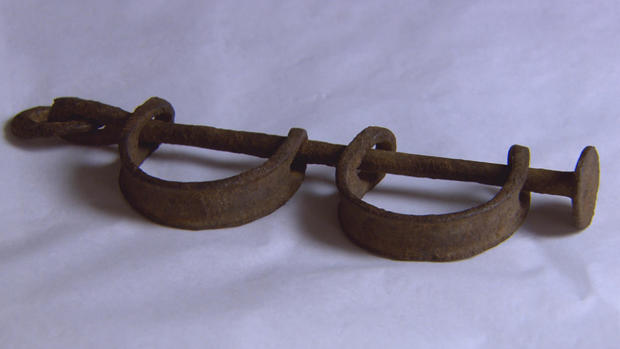"The history lesson I never got in school"
There are rusted shackles that bound the wrists of men for sale and a polished violin where black fingers played freely. Segregated train cars divided passengers, while Satchmo’s trumpet connected Americans with a love of jazz. Four hundred years of artifacts like these are now housed in one building, the National Museum of African American History and Culture. It’s a project that’s taken 87 years to complete, and it will finally open to the public on Saturday.
In spring 2015, 60 Minutes producer Nicole Young gave viewers a first look at these relics — and the museum itself — through the piece “A Monumental Project” (in the video player above). In it, correspondent Scott Pelley reported on the herculean effort to pull together the Smithsonian Institution’s newest collection.
The 60 Minutes piece shows viewers the museum when it was under construction, its content still in a nearby warehouse. Now that it’s completed, Young says the exhibition fills in gaps neglected by textbooks. “It was kind of the history lesson I never got in school. And for me, the more we dug into the material, the more we dug into the narrative, the more we dug into what this museum was about, “ says Young, “I realized that I had missed out on so much growing up, something that I was so happy to discover in my 30s.”
Young and Pelley interviewed the museum’s founding director, Lonnie Bunch, who has spent the better part of a decade working to raise money and to find the project’s balance. “What I’m trying to do is find the right tension between moments of sadness and moments of resiliency,” Bunch explained.
He began looking for moments of a more personal nature in 2008, when the Smithsonian asked Americans to rummage through their own basements and attics. Curators hosted 16 events, and about 3,000 people brought keepsakes of their family history. After careful examination, experts chose 25 of those items to be displayed in the museum.
Curator Nancy Bercaw found it easy to convince people to part with priceless family heirlooms. “Our museum pitches itself,” she told Scott Pelley. “All we have to do is tell the absolute honest truth. People have been waiting for us. People in America have been waiting for this moment.”
Now that the moment is here, the museum’s impact seems to linger.
Since first viewing the items more than a year ago, Young says several have stuck with her emotionally, including the pair of shackles used for slave transportation. “To hear about someone being shackled and treated like cattle is one thing,” she says. “To see something like that up close and personal really is sobering — but necessary.”
Young says she was also struck by the image of a Ku Klux Klan banner, which at the time was being carefully preserved by an African American curator in a Maryland warehouse. “It’s a piece of art,” Young explains. “It’s a piece of history. And it’s important, regardless of what it symbolized many years ago and what it symbolizes today.”
No matter which relics resonate with visitors after they leave, the museum’s founding director hopes they experience the full range of history he hopes to tell.
“This is not the museum of tragedy,” Bunch told Pelley. “It is not the museum of difficult moments. It is the museum that says here is a balanced history of America that allows us to cry and smile.”
For Young, the museum has helped her reflect on more than past events.
“For me, to rewind so far back in time with what I was able to learn with this museum, to discover the story of my ancestors, of the ancestors of the people we know today, of the ancestors of the president of the United States, allowed me to really have an even more rich understanding about where we are now as a country, where we still need to be, yet how far we have come.”



